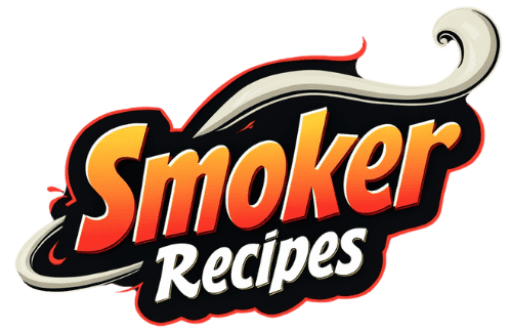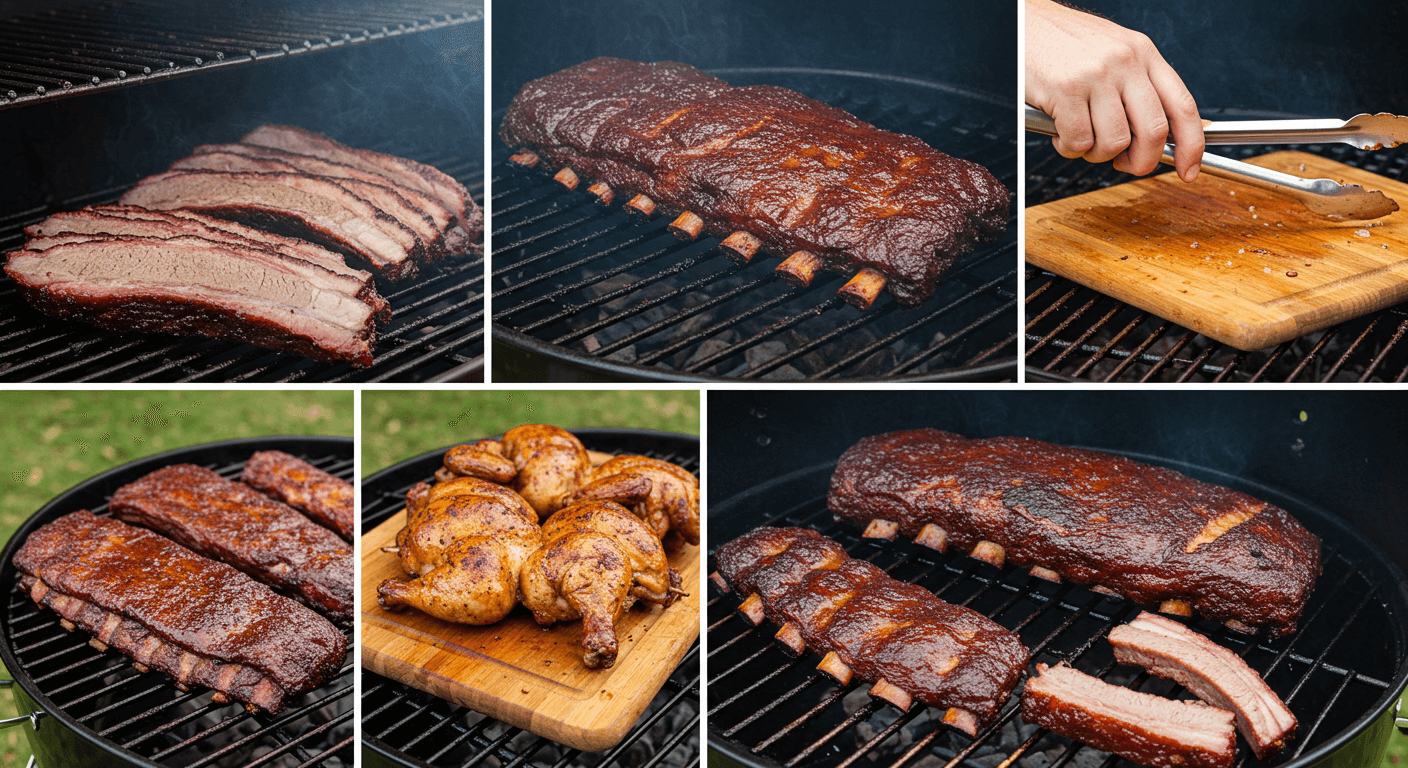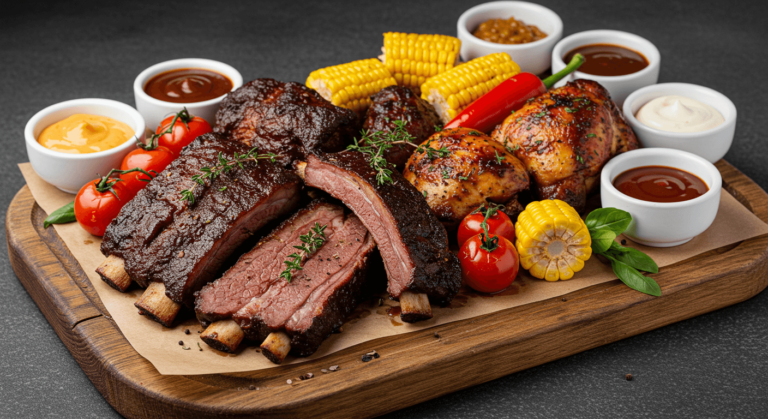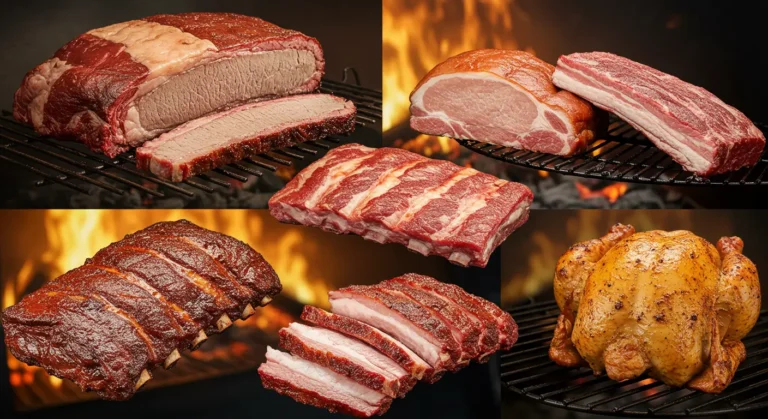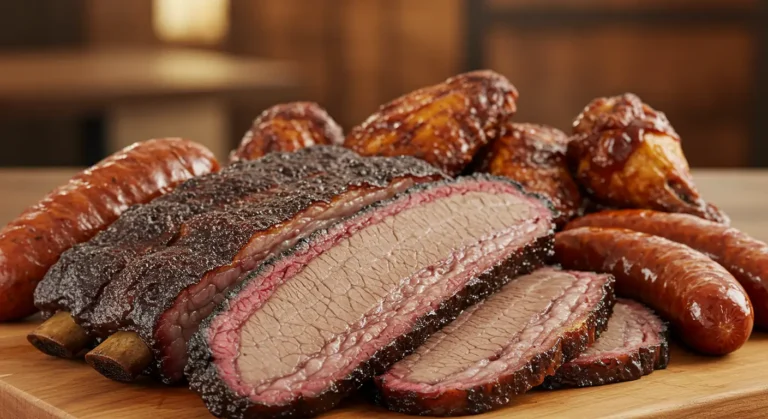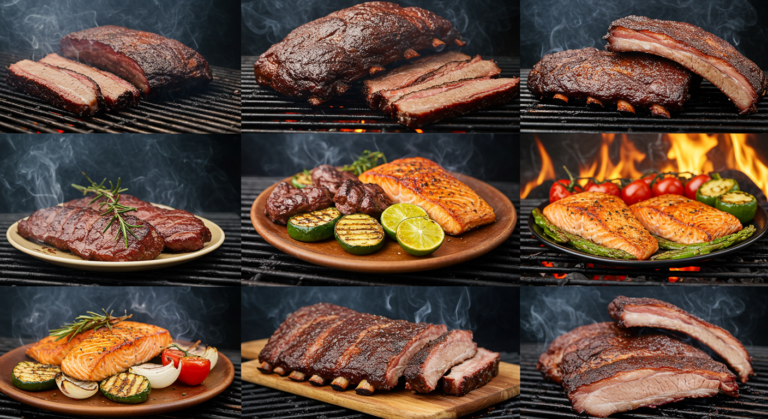How to Make Smoked Meat Recipes Using a Charcoal Grill
smoked meat recipes :There’s something primal and deeply satisfying about the rich aroma of wood smoke mingling with the savory scent of meat slowly cooking to perfection. That first bite of properly smoked meat—tender, juicy, with complex layers of flavor that can’t be achieved any other way—is an experience worth mastering. As someone who’s spent countless weekends tending to smokers and teaching others this culinary craft, I’m excited to guide you through the transformative journey of smoking meat on a charcoal grill.
In this comprehensive guide, we’ll explore everything from the fundamentals of smoking techniques to specific recipes that will impress both your family and guests. Whether you’re a complete novice who just unpacked your first charcoal grill or a seasoned enthusiast looking to refine your skills, you’ll find actionable insights to elevate your smoking game.
What Makes Smoking Different from Other Cooking Methods?
Smoking is more than just a cooking method—it’s a slow transformation of food through the patient application of indirect heat and flavorful smoke. Unlike grilling, which uses high direct heat for quick cooking, smoking embraces time as an essential ingredient.
“Smoking meat isn’t just cooking—it’s a relationship between you, the meat, and time,” says Aaron Franklin, renowned pitmaster. “You can’t rush it any more than you can rush a sunset.”
The magic happens between 225-275°F, where tough collagen in meat slowly converts to gelatin, creating that melt-in-your-mouth texture barbecue enthusiasts chase. Meanwhile, compounds in wood smoke adhere to the meat’s surface, creating complex flavor profiles impossible to replicate through other cooking methods.
How Do Different Woods Create Distinct Flavor Profiles?
The wood you choose acts as a seasoning, fundamentally changing your smoked meat’s character:
Hickory: Robust and bacon-like, perfect for beef brisket and pork Apple: Mild and slightly sweet, excellent for chicken and turkey Mesquite: Intense and earthy, ideal for beef and game meats Cherry: Mild with subtle sweetness, creates beautiful color on poultry Oak: Medium strength, versatile for most meats Pecan: Sweet and nutty, wonderful with poultry and pork
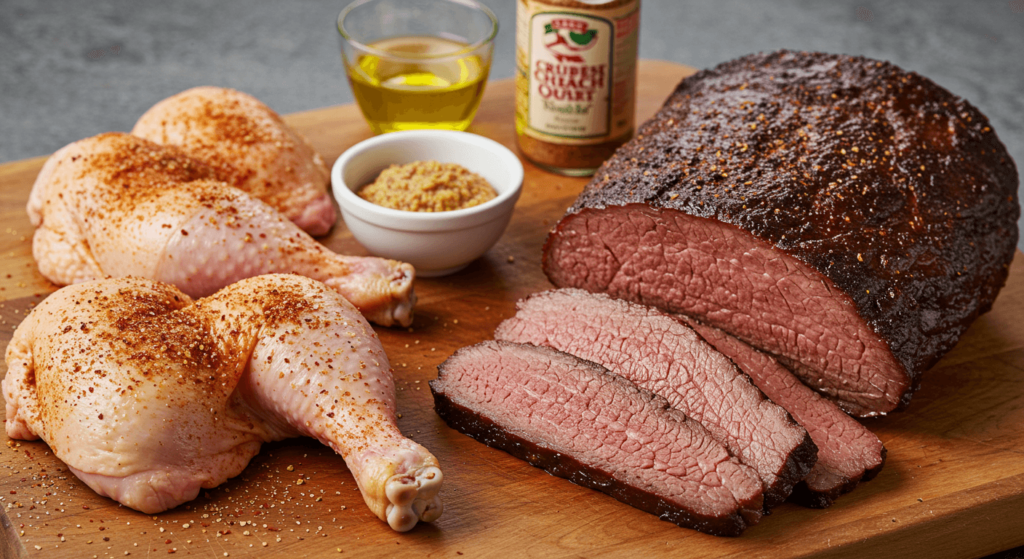
Beginners should start with milder woods like apple or cherry before experimenting with stronger options like hickory or mesquite, which can overwhelm delicate meats if used too liberally.
What Equipment Do You Need for Smoking on a Charcoal Grill?
The beauty of starting with a charcoal grill is accessibility—you don’t need specialized equipment to begin your smoking journey. With a few modifications, a standard Weber kettle or similar charcoal grill becomes an effective smoker.
Essential equipment includes:
- Digital meat thermometer (preferably with dual probes)
- Charcoal chimney starter
- Heavy-duty aluminum foil
- Wood chunks (not chips—they burn too quickly)
- Drip pan for indirect cooking
- Long-handled tongs and spatula
- Heat-resistant gloves
For temperature control, you’ll need to create a two-zone setup: coals on one side, meat on the other, with a water pan beneath the meat to stabilize temperatures and add moisture.
How Do You Set Up a Charcoal Grill for Smoking?
The key to successful smoking on a charcoal grill lies in proper setup:
- Light a chimney starter half-filled with charcoal (about 25-30 briquettes)
- Once coals are ashed over (15-20 minutes), arrange them on one side of the grill
- Place 2-3 wood chunks on the hot coals
- Position a disposable aluminum pan filled halfway with water on the empty side
- Place the cooking grate and position your meat on the side above the water pan
- Adjust bottom vents to maintain temperature (more open = hotter)
- Position the lid vent over the meat to draw smoke across it before escaping
This indirect cooking method ensures gentle heat circulation and proper smoke exposure.
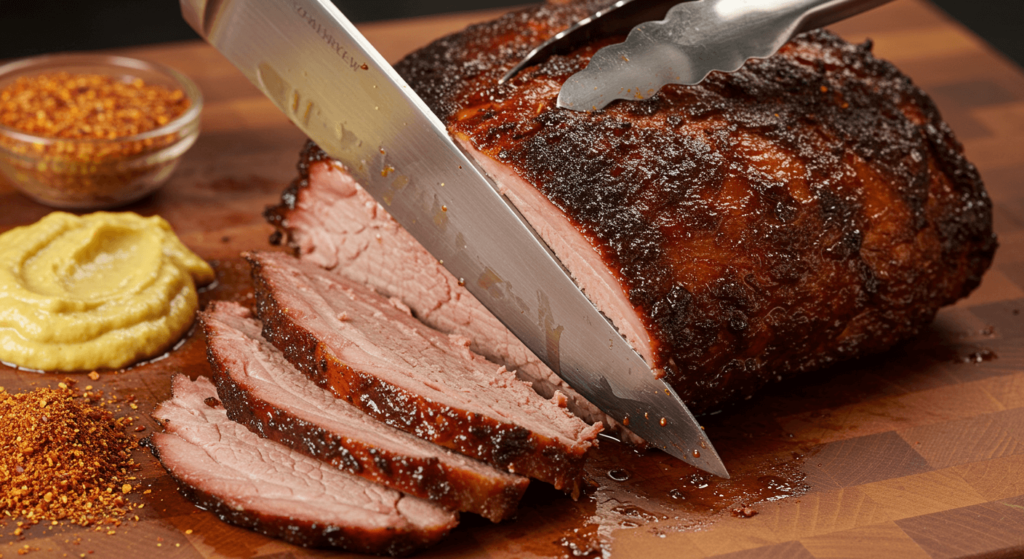
What Are the Best Meats for Smoking?
While smoking works well for many proteins, some cuts particularly shine in a smoker due to their fat content and connective tissue:
Beef Cuts for Smoking
Beef Brisket: The holy grail of smoking, a whole packer brisket (10-14 pounds) includes both the leaner flat and the fattier point. Look for good marbling and a thick fat cap.
Beef Ribs: Dinosaur-sized beef plate ribs deliver an impressive presentation and incredible flavor. Cook until the meat easily pulls away from the bone.
Chuck Roast: More affordable than brisket but with similar characteristics, chuck roast makes excellent “poor man’s burnt ends” when cubed after smoking.
Chicken and Turkey for Smoking
Whole Chicken: Brining before smoking helps chicken retain moisture. Spatchcocking (butterflying) promotes even cooking.
Turkey Breast: A foolproof option for beginners, turkey breast smokes relatively quickly and stays juicy when not overcooked.
Chicken Wings: Perfect for gatherings, smoked wings develop incredible flavor before finishing with a quick sear for crispy skin.
Game Meats for Smoking
Venison Roast: Lean game meats benefit from gentle smoking. Consider bacon-wrapping or injecting with butter to add fat.
Duck Breast: The rich fat renders beautifully in a smoker, creating crispy skin and medium-rare meat.

What Are Some Foolproof Beginner Recipes?
Smoked Chicken Quarters
Ingredients:
- 4 chicken leg quarters
- 2 tablespoons olive oil
- 3 tablespoons barbecue rub
Instructions:
- Pat chicken quarters dry and brush with olive oil
- Season generously with barbecue rub
- Set up your charcoal grill for indirect cooking at 275°F
- Add apple or cherry wood chunks to the coals
- Place chicken on the cool side of the grill
- Smoke until internal temperature reaches 175°F (about 1.5 hours)
- Let rest 10 minutes before serving
Pro Tip: For crispy skin, increase grill temperature to 375°F for the final 15 minutes of cooking.
Smoked Chuck Roast
Ingredients:
- 4-5 pound beef chuck roast
- 3 tablespoons mustard
- 4 tablespoons beef rub
Instructions:
- Coat chuck roast with mustard (as a binder)
- Apply beef rub generously on all sides
- Set up charcoal grill for indirect cooking at 250°F
- Add oak or hickory wood chunks
- Smoke until internal temperature reaches 165°F (about 3-4 hours)
- Wrap tightly in foil with 1/4 cup beef broth
- Continue cooking until internal temperature reaches 203°F (about 2 more hours)
- Rest wrapped for 1 hour before slicing against the grain
Pro Tip: Don’t rush the rest period—it’s when the meat reabsorbs juices and becomes more tender.
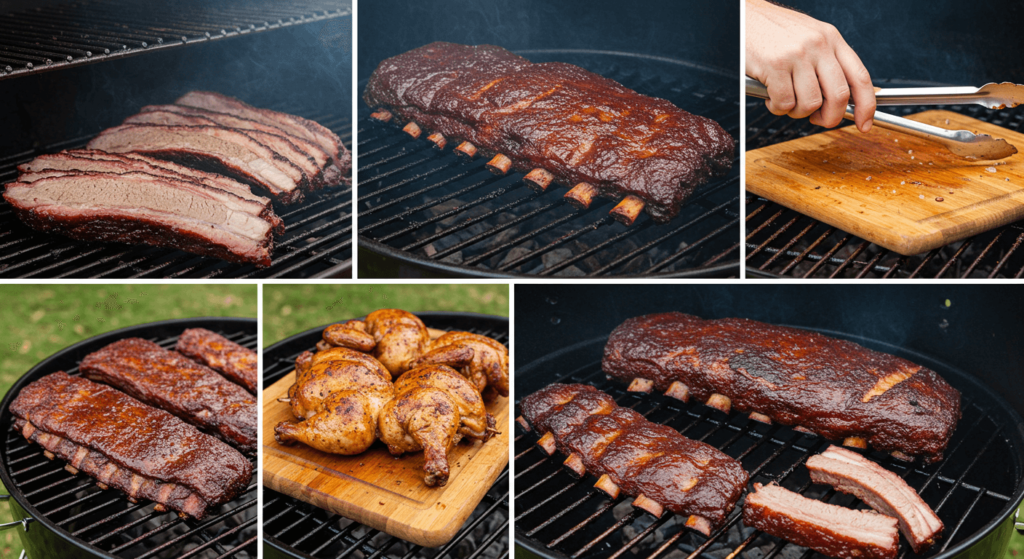
How Do You Manage Temperature Control?
Temperature control is the greatest challenge for beginners smoking on charcoal grills. Consistency is more important than hitting an exact number—a range of 225-275°F is your target.
For Temperature Increases:
- Open bottom vents wider
- Add 8-10 unlit briquettes to the fire
- If necessary, partially open the lid temporarily
For Temperature Decreases:
- Close bottom vents partially
- Never close vents completely (creates bitter creosote)
- Add a pan of ice next to the water pan in extreme cases
Understanding the Stall: Large cuts like brisket often experience “the stall”—a period where the internal temperature plateaus for hours, typically around 150-170°F. This occurs as moisture evaporates from the meat’s surface, creating a cooling effect. Options for managing the stall:
- Push Through: Simply maintain temperature and wait (purist approach)
- Texas Crutch: Wrap in foil with liquid to power through the stall faster
- Butcher Paper Wrap: A middle-ground approach that allows some moisture escape while speeding cooking
What Are Advanced Smoking Techniques?
Once you’ve mastered the basics, these advanced techniques elevate your smoking:
Spraying and Mopping
Periodically applying a spray (apple juice, vinegar, broth) or mop sauce helps develop bark, adds flavor, and promotes smoke adherence. Begin after the first hour and apply every 45-60 minutes.
Creating Burnt Ends
This competition favorite transforms the point end of a brisket:
- Separate the point from the brisket flat after reaching 195°F
- Cube the point into 1-inch pieces
- Toss with barbecue sauce and additional rub
- Return to smoker for 1-2 hours until cubes are caramelized
Cold Smoking
Appropriate for cheese, nuts, salt, and cured salmon, cold smoking infuses flavor without cooking. This requires specialized equipment to generate smoke while keeping temperatures below 85°F. smoked meat recipes
What Are Common Smoking Mistakes?
Avoiding these pitfalls improves your results dramatically:
Too Much Smoke: White billowing smoke creates bitter, acrid flavors. Aim for thin, blue smoke—almost invisible.
Opening the Lid Too Often: “If you’re lookin’, you ain’t cookin’.” Each peek releases heat and extends cooking time.
Rushing the Process: Low and slow isn’t just a saying—it’s the science of transforming tough cuts into tender mast rpieces.
Skipping the Rest Period: Cutting meat immediately after cooking releases precious juices. Rest large cuts for at least 30 minutes, up to 2 hours for brisket.
Under-Seasoning: Smoke is a flavor component, not the entire flavor profile. Season generously before smoking.
What Makes a Great Barbecue Rub?
Creating your own signature rub allows customization while understanding the core principles:
Base (50%): Salt and sugar (brown sugar for beef/pork, regular for poultry) Primary Spices (25%): Paprika, black pepper, garlic powder, onion powder Secondary Spices (15%): Cumin, chili powder, dry mustard Accent Spices (10%): Cayenne, cinnamon, herbs, coffee grounds
For beef, emphasize pepper and minimize sugar. For poultry, add herbs like thyme and rosemary. Always apply rubs at least 1 hour before cooking—overnight is better for large cuts.
How Do You Know When Smoked Meat recipes is Done?
While temperature guidelines provide safety benchmarks, experienced smokers recognize additional doneness indicators:
Probe Tenderness: A temperature probe should slide into the meat with minimal resistance, like “butter”
Bone Movement: In properly smoked ribs, bones move freely when twisted gently
Bark Quality: Properly developed exterior bark should be firm and dark, not soft or pale
Visual Cues: Proper rendering produces meat that jiggles slightly when the cooking grate is tapped
Troubleshooting Common Smoking Problems
Tough Results: Usually indicates undercooked meat—tough connective tissue hasn’t fully broken down. Solution: Continue cooking to a higher internal temperature.
Dry Meat: Often from overcooking or selecting too lean a cut. Solutions: Cook to proper temperature, not beyond; choose appropriately marbled cuts.
Too Much Smoke Flavor: Caused by heavy white smoke or excessive wood. Solutions: Ensure proper airflow; use fewer wood chunks; switch to milder wood.
Stalled Temperature: Normal phenomenon where evaporative cooling temporarily prevents temperature rise. Solutions: Wait it out or wrap in foil/butcher paper to push through faster.
Beyond the Basics: Creating Your Smoking Style
As you gain confidence, develop your personal approach:
Regional Inspirations: Explore traditions from Texas (salt and pepper only), Carolina (vinegar sauces), Kansas City (sweet tomato-based sauces), or Memphis (dry rubs).
Competition Techniques: Study what wins trophies—typically enhanced moistness, pronounced smoke rings, and perfect bite-through texture.
Signature Touches: Perhaps your apple juice spritz, coffee rub, or cherry wood preference becomes your trademark.
Smoking meat isn’t just cooking—it’s participating in a centuries-old tradition of food preservation and flavor development. The techniques haven’t fundamentally changed because they work, connecting modern backyard enthusiasts with generations of smoke masters before them.
Frequently Asked Questions About Smoking Meat
How long should I soak wood chips before smoking? Wood chunks don’t require soaking and provide better results than chips for charcoal grills. Soaked chips produce steam before smoke, potentially delaying proper smoke development.
Do I need to flip meat while smoking? Generally no—the indirect cooking environment creates convection airflow. Exception: smaller items like chicken wings benefit from occasional turning.
Can I use my charcoal grill for both smoking and grilling in the same session? Yes! Start with smoking, then reconfigure for high-heat grilling to finish or cook additional items. This technique works particularly well for reverse-seared steaks and chicken with crispy skin.
What causes the pink smoke ring, and is it important? The smoke ring results from nitrogen dioxide in smoke interacting with myoglobin in meat. While visually appealing, it doesn’t affect flavor—perfectly smoked meat can lack a pronounced ring depending on conditions.
The journey to mastering smoked meat never truly ends—there’s always a new technique to perfect, a regional style to explore, or a cut of meat to experiment with. Start simple, be patient, and remember that every session provides valuable experience. Whether your results are perfect or provide learning opportunities, sharing food you’ve crafted through time and attention creates connections that transcend the meal itself.
What smoking experiences would you like to share? What challenges have you faced with your charcoal grill smoking setup? I’d love to hear about your adventures and answer any questions in the comments below .Smoker Recipes
Have You Tried This Recipes!
Fall-Off-The-Bone Smoked Brisket – A BBQ Game Changer
This smoked brisket recipe is absolute perfection! The homemade rub created a delicious crust, and the low-and-slow smoking made the meat incredibly tender. I used hickory wood chips, which gave it a rich, smoky flavor. The only change I made was adding a bit more cayenne for extra heat. Resting the brisket for an hour was key—it stayed juicy and sliced like a dream. My family devoured it in minutes! 10/10, will
